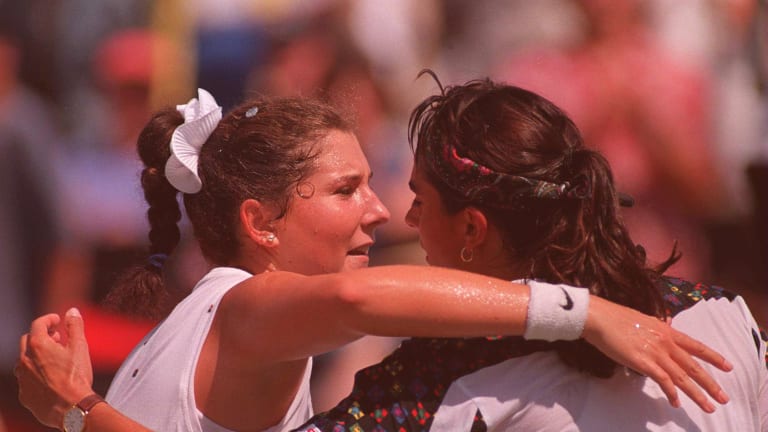There’d been a time when reaching a WTA singles final was business as usual for Monica Seles. After all, prior to arriving in Toronto during the summer of 1995, she’d gone that far in 35 of her last 37 tournaments.
But 28 months had passed since Seles had last competed. Her exile was the result of a horrible, unprecedented tragedy. On April 30, 1993, while playing an event in Hamburg, Seles was stabbed on a courtside changeover by a deranged fan. There followed a physical recovery – a half-inch wound between spine and left shoulder blade that called for surgery. There was also an emotional recovery, Seles grappling with the tremendous and distinct psychological impact of the stabbing.
In July 1995, in Atlantic City, she’d returned by playing Martina Navratilova in an exhibition. Seles won that match, 6-3, 6-2, but of course she’d earned a far greater triumph. “The weeks leading up to here were nerve-racking,” said Seles in the New York Times article about this match, “but today when I walked on the court and kind of realized I was going through with this whole plan, it was an unbelievable feeling.”
Next came a tournament, Seles off to Toronto for the first time to play the Canadian Open. Her good friend, former pro Betsy Nagelsen, gave her a tour of the city. “In addition,” wrote Seles in her 1996 book, From Fear to Victory, “I had a wonderful time with my fellow players. The first night of the tournament they held a welcome back party for me. It was great to see my generation, along with a new group of players I didn’t know.”
Then there was the matter of competition. Seles’ game had always been fueled by supreme confidence and her ability to instantly take command of virtually every single shot of a rally. How would this hold up after an exceptionally lengthy absence?

